I Keep going forward. Collection Growing Up! Part 8
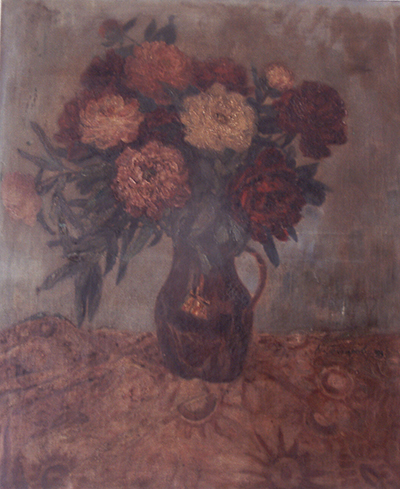
The theatre continued to be a major site of artistic innovation in the 1920s – 1930s. At a time when the avant-garde no longer saw painting alone as a viable artistic option, theatre afforded a way to communicate directly with a new “democratic” audience on topics of immediate social relevance. Between 1917 and 1939, N. Gontcharova produced hundreds of designs for theatrical costumes and sets. The theatre offered the artist a wide scope for invention. Not all the projects were realized and when a production was proposed, it was not always clear from the beginning who would be the chosen artist. The artists worked in close partnership with singers, actors, dancers and directors, and in the resulting productions the visual element assumed a prominent, often primary role.
In Paris, N. Gontcharova was a more productive painter than her husband. Her shifts in style correspond loosely to shifts in the School of Paris. It is clear, too, that Gontcharova was engaged in repainting early paintings either by adding decorative elements to the surfaces of pre-Revolutionary works or by repainting whole portions of the canvas. Obviously, this has further compromised the historical reconstruction of her career, a collection I had, that will require years of comparative, collaborative work among scholars.
I didn’t think about it then, I enjoyed the process. It was interesting. Find who had to, find out where it could be, meet people, talk, buy something. My previous search got results. I bought the painting from the Kasatkin daughter portrait collection. I got the interesting oil painting “Jug with flowers” from Labuckiene (“I got” means I don’t need to pay, sometimes she just gave me a bag. Here is something for you – she smiled) Also, I bought a bunch of theatre costume designs, at the same time.
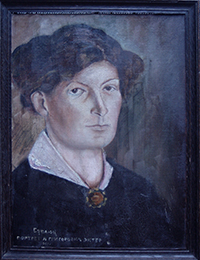
I start to do research using books about Kaunas State Theatre. The first name was of theatre director A. Sutkus . Was easy to find, the memory board about him hung on the house he lived in. I lived a few minutes walk from here. But I didn’t know if anybody still lives there. The director A. Sutkus died 1968. Main part of the building was used for administrative purposes, offices or something like that. Only one window looked like a living flat. I didn’t know if the director had a family or not. Nobody in offices based in the building ever heard about this person. The doors which look like the entrance to the flat never opened when I tried to find someone in there. Here was a supermarket, a few minutes from here. Anyway, every day I went to buy food here and passed on A. Sutkus house lot times. One day I saw two drunk people sitting on the stairs here. Old woman and a much younger man. I asked them, maybe they know something about A. Sutkus who lived here. What do you want, an old woman said. I explained what I have interest to know more about Kaunas State Theatre and I have an interest to know more about A. Sutkus. Get out of here, drunk woman said, I am daughter of A. Sutkus.
I met her after a few days, she was less drunk, and we started to talk. She said not for sale anything from her mother’s and father’s estate. Sometimes we met again, sometimes she was drunk and couldn’t recognize me, sometimes she walked with her young boyfriend, they were both drunk. One day she said what she wants to invite to visit her flat and to talk. I came the next day as we agreed. She was drunk again, her boyfriend too. The mess everywhere inside. One painting on the wall, empty bottles on the floor. On the shelves are a few interesting Artdeco style glass vases and few old albums with personal photos. She wasn’t allowed to touch albums. He said vases are not for sale yet. Maybe painting. We started to talk about price. But it was very difficult. She every minute changed her mind, or started to talk about other things that were not easy to understand. The smell in the flat was also not best. Suddenly I said, 500 Litas and I will go. She agreed. I paid. And here began unbelievable events when she took the painting from the wall. She started to shout – you want to take my father’s painting – and she drops it to her boyfriend. He drops it back. It continued for a few minutes. I caught the painting and went away as far as I could from this flat.
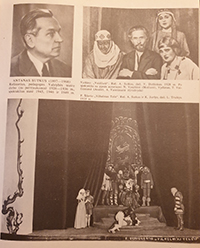
Antanas Sutkus
(1897 Russia – 1968 Lithuania, Kaunas)
Lithuanian theater director, pedagogue, theatre theorist and experimenter.
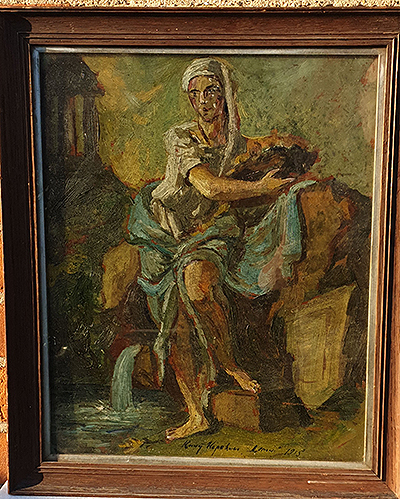
I also started collecting theater photos, programs, letters, various personal items of the actors. I needed more and more information because it was not easy to find descendants of these people.
Even in the current times, information on the Internet is very minimal or not at all.
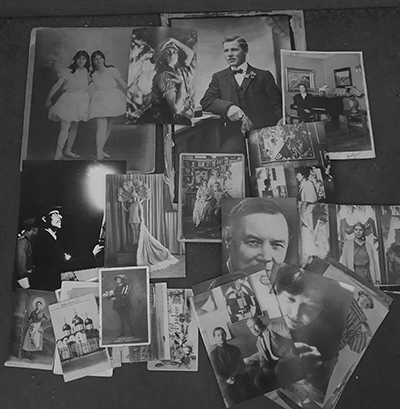
Will be continued…